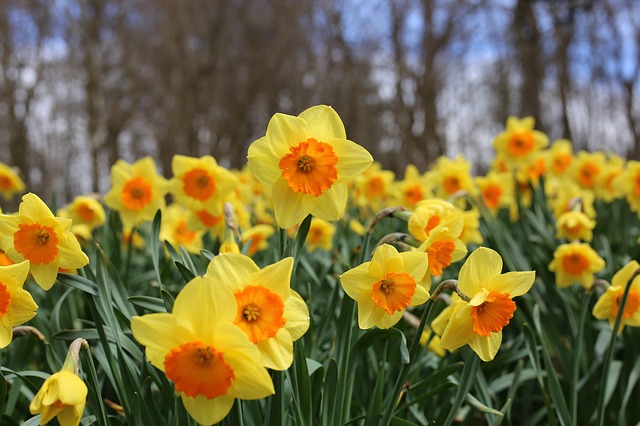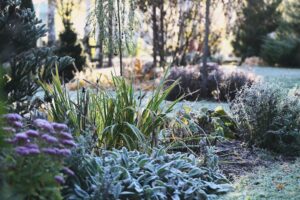
With the start of February comes one of the first signs of spring – the daffodils! Although daffodils begin to flower this month it’s typical to have seen them start to drive up through the ground in our gardens from January. In recent years they’ve also started to become a bit of a familiar feature of flower stands at the supermarkets too, particularly after the Christmas displays have been packed away.
Daffodils first originated in Greece and were cultivated there and in ancient Rome around 200 – 300 BC. Their Latin name is Narcissus; the name of a handsome young man in Ancient Greece who was told not to ever look at his reflection by the gods. Despite the warnings, he paid no attention and was turned into a daffodil because of his vanity.
Today, these trumpet-shaped flowers are synonymous with spring and herald brighter days ahead for gardeners. Daffodils are also recognised as the 10th-anniversary flower. However, they should never be presented as a single flower, which is said to bring bad luck, so always make sure you give them in a bunch.
And beware if you’re using them as an indoor display; daffodil sap is toxic to other flowers, so a good tip is to follow florist’s advice and soak the stems for 24 hours before putting them in a vase with other flowers. The bulbs are toxic too so label carefully and take care with children and animals.
Planting and Caring for Daffodils
For the best displays daffodil bulbs should be planted in September, and certainly by the end of October, before the ground starts to cool down in deepest autumn. Plant the bulbs with their tips pointing up and to a depth of around three times the height of the bulb. They should start to shoot in January, offering a bright and cheery display and suiting almost every garden and setting.
Once the daffodils have bloomed and started to fade, there are two schools of thought – you can deadhead them so that the bulb saves energy for next year or tie them off making sure the leaves aren’t cut back. Either option should help the bulbs naturalise over time, leading to banks of springtime colour in years to come.




